What do you know about St. Basil’s Church in Russia?
Russia is a country with a long history, full of beauty, attraction, interesting and spectacular places, legendary and historical stories full of incidents and ups and downs. Every place in Russia has its own story and history. People who lived in the heart of the events. Russia, especially the cities of Moscow and Saint Petersburg, are among the main destinations for those interested in traveling. There are many places to visit in Russia. The wonders of this vast country know about its culture and ancient history. St. Basil’s Church (in English: St. Basil) (in Russian: Собор Василия Блаженного) is not a simple building even at first glance. You see a palace with a set of domes that are stretched towards the sky like colored creams. The domes do not have the same design and color, and this is what makes this building unique in the world. In a way, it can be said that Saint Basil’s Church was taken out of a fantasy book.
It is mentioned in the history that this church was very important in different eras. In the 16th and 17th centuries Saint Basil’s Church was an earthly symbol of the heavenly city and an allegory of Jerusalem among Orthodox Christians. The importance of this church was so great that the annual “Palm Sunday” parade was held in this building.
Introducing Saint Basil’s Cathedral
Saint Basil’s Cathedral is an Orthodox church, south of Moscow’s Red Square; One of the most famous squares in the world, which has witnessed many historical events, including the fall of Lenin. This church is one of the most popular and valuable cultural symbols of Russia.
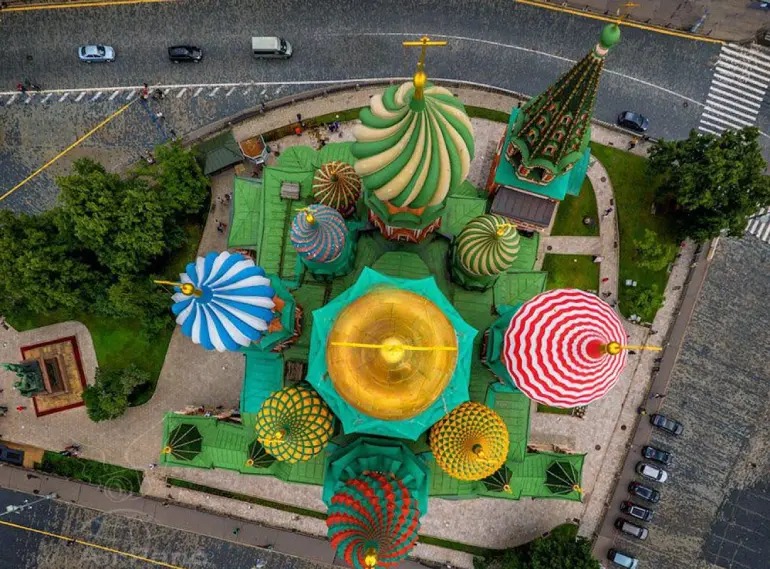
Introducing Saint Basil’s Cathedral
This building was built in 1555. It started and ended in 1561; But in 1683, the work of construction, design and painting took a long time. Saint Basil’s Church was built by order of “Ivan the Terrible” and in memory of the capture of Kazan and Astrakhan.
Barma and Postnik were two architects and designers of the church who designed and built the church with unparalleled precision and elegance. It is said in history that these two paid a heavy price for this unique art. There are narrations that after seeing the beauty and glory of the church, Mokhuf ordered to blind the eyes of the two so that they could no longer build a building with this magnificence.
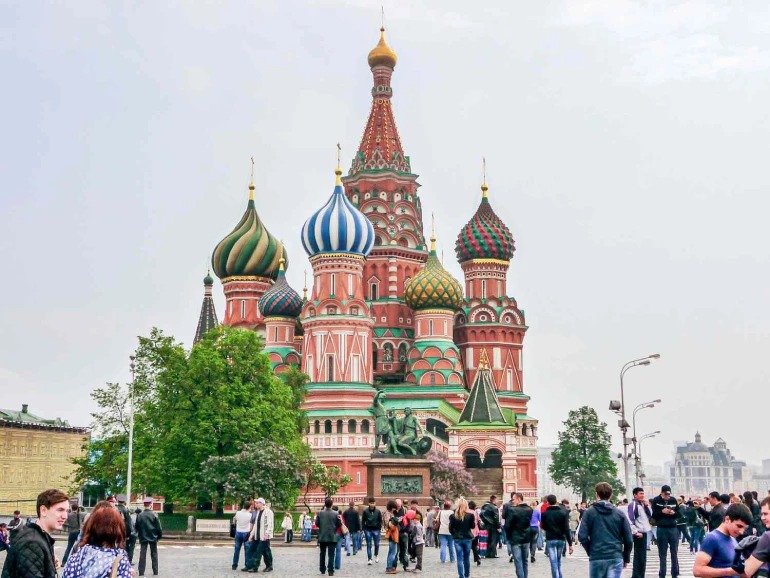
Image from: Tripsavvy
Of course, this legend was later rejected, because these two architects were involved in the construction of the Cathedral of the Annunciation, as well as the walls and towers of the Kazan Kremlin. Almost all historians believe that the church is not similar not only in its time, but also before and after itself, and this design is a combination of the cultural tradition of Moscow and Byzantium.
Many consider its columns to be inspired by Asian architecture. In the meantime, there is a theory that says Basil’s Cathedral was inspired by the Qolsharif Mosque in Kazan.
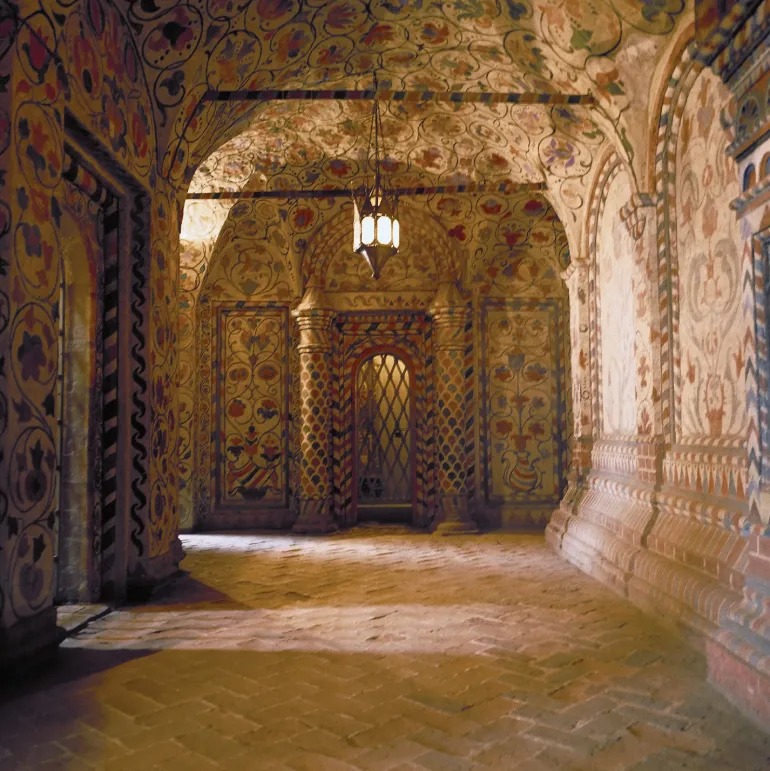
Saint Basil’s Cathedral
One of the reasons for the fame of this building, after its greatness, is its domes, which stand out in the shape of onions or colored creams. Many consider this style of brickwork in arches to be derived from Italian art.
The color of the church has changed to its current form after passing through several stages. The use of colors in those years showed the growth of the art of iconography and mural painting, which showed off the power, art and culture of the ruler of the time.
Basil’s Cathedral was included in the UNESCO world list in 1999, and in 2007 it was registered as one of the Seven Wonders of Russia. The history of Russia is going on in this church. All the walls of the building have witnessed strange events, from fires to world wars, human travel to space, cold war, poverty and famine, and the fall of communism.
He has also seen long queues of Russian people for bread, soup and drinking water. This building, which was rebuilt and restored many times, was fully introduced as a museum in 1929, and all its assets, including paintings, assets, altar sculptures, paintings and everything that was in the church, were included in the list of museum assets.
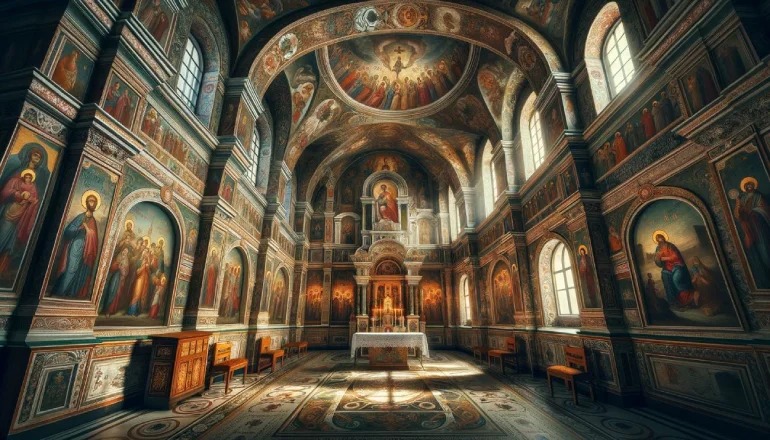
Image from: Christian
Where is Saint Basil’s Church?
To see St. Basil’s Church, you must go to Russia, Moscow and Red Square; Stand facing south of the square and enjoy watching this building.
Access route to Saint Basil’s Church
As mentioned above, Saint Basil’s Church is located in the south of Red Square. So, to reach this place, you have to go to Red Square, which is one of the most famous places in Moscow. In the following, we will check all access routes to this place:
subway
Moscow has one of the best and most amazing metro lines in the world. There are 17 lines and 230 stations in the world’s oldest subway. If you travel to this city, be sure to use the subway to move around; In the strict sense, it is both fortune-telling and watching.
1- Line 1: Get off at Okhotny Ryad station and walk three minutes to Red Square.
2- Line two: get off at Teatralnaya station. You are 5 minutes away from Red Square.
3- Line 3: get off at Ploshchad Revolyutsii station and reach Red Square after 5 minutes of walking.
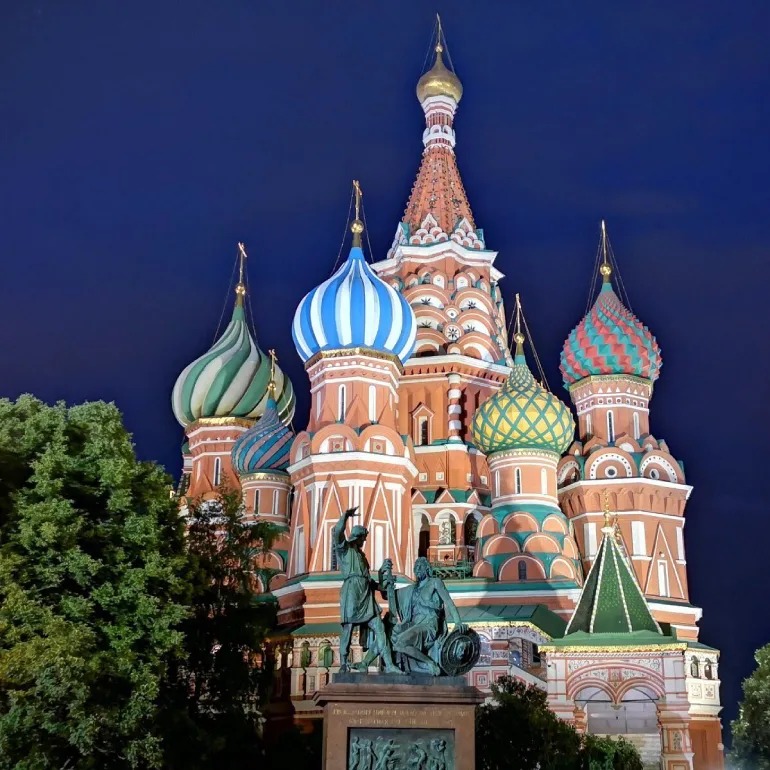
Image from: Tripadvisor
the bus
Red Square is one of the main squares of Moscow. Many historical and important buildings of this city are located in this square. For this reason, Russia’s extensive public transportation system must pass through this square. Often, most buses pass near Red Square.
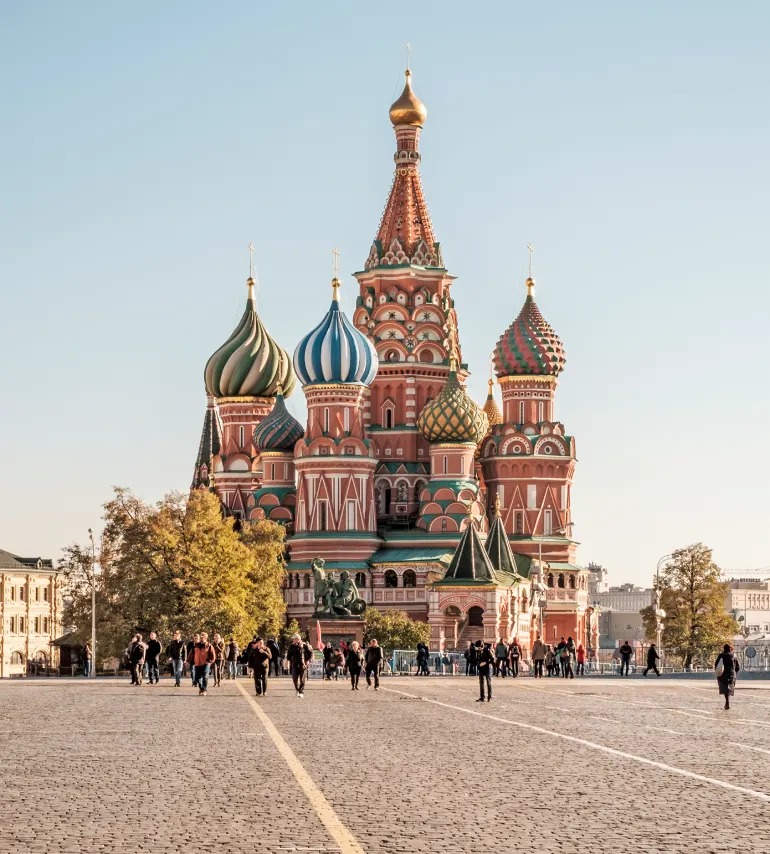
Image From: Wikimedia
taxi
You can easily get to Red Square and Saint Basil’s Cathedral from wherever you are by installing the Russian online taxi app.
The best time to visit Saint Basil’s Cathedral
Moscow is beautiful in all seasons. The date of your trip to Moscow and visiting St. Basil’s Cathedral depends entirely on your taste. The best time to visit the church is spring and summer, when the city has milder weather and longer days. However, despite the cold Russian winters, the snow-covered church has its own unique beauty and charm.
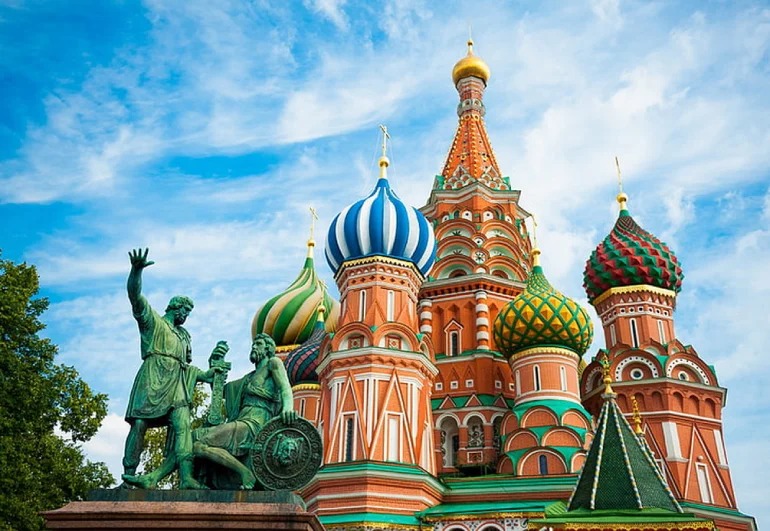
Image from: Thinkingthefuture
Working hours of St. Basil’s Church
Saint Basil’s Church is open from 10 am to 7 pm in the first 6 months of the year. If you go to Moscow in the second 6 months of the year, you should know that the working and visiting hours of the church are from 11 a.m. to 5 p.m. Also note that entry is free for under 16s. In planning your visit to the church, remember that the church is closed on the first Wednesday of every month for cleaning.
History of St. Basil’s Church
History says that the full name of Saint Basil’s Cathedral is “Cathedral of the Holy Intercession of the Mother of God in the Moat” and refers to the moat that ran along the walls of the Kremlin and joined the Moscow River on one side and the Neglinaya River on the other. This ditch was filled in 1814. This building was built on the direct order of Ivan the Fourth or Ivan the Terrible in Red Square.
Historically, the site where the church stands today was a busy local market between the Saint Ferrol Gate and the Posad. Accordingly, the church was built as a symbolic link between the Kremlin (the center of political power) and the Posad (dense business district) in Kitai Gorod.
In this place, there was a church called Trinity Church, which Tsar Ivan IV decided to build a wooden church next to this church as a memorial after every victory in the war between Russia and Kazan. Finally, with the victory and conquest of Astrakhan, the fourth tsar built a complex of seven churches around the Trinity Church.
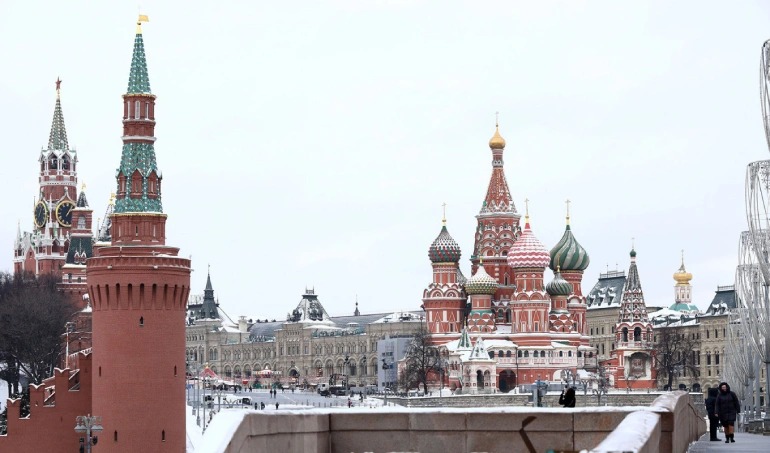
Image from: Themoscowtimes
In other words, we can boldly say that the origin of St. Basil is as complicated and strange as its form. After Ivan IV conquered the city of Kazan in October 1552, he ordered the construction of a church dedicated to the Holy Trinity in the square outside the Kremlin at the Frolov Gate.
According to “Chronicle” reports, in 1554, Ivan ordered the construction of a wooden church called the Church of Intercession in the same place, and the following year, in 1555, he ordered the construction of a large stone church instead of the Trinity Church.
This order was to commemorate his years of struggle. Saint Basil’s Church was added to the cathedral in 1588 and was built on the grave of a person named Saint Basil. Today there is a shrine to Saint Basil and his remains are still in the basement.
The skeleton of this building is made of wood and is decorated with bricks and stones. It is said in history that most likely, the stonework of this church was done by German workers and this glory was the result of the cooperation of Russians and Italians.
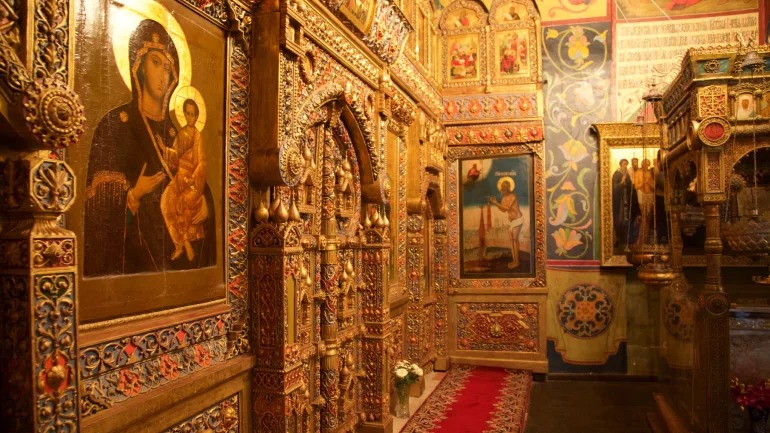
Image from: Expedia
Architecture of St. Basil’s Church
The complex of St. Basil’s Cathedral consists of a central tower surrounded by eight independent chapels on a common terrace, enclosed and painted in the 17th century. The plan of this complex shows the concept of trinity: each diagonal and side axis has three towers and the structure is divided into three parts at the terrace level.
The cathedral was the tallest structure in Moscow until 1600. One of the distinctive architectural features of this church is that it does not have a main entrance; Visitors could enter the church from any direction. It was at the end of the 16th century that due to many people visiting the tomb of St. Basil in the 10th church, the entrance on this side of the church gradually became the main entrance.
As you enter the church, you are guided down the stairs, which is where the Tsar kept his treasures. Later, wealthy citizens of Moscow kept their property here. During the Soviet era, this place was used as administrative offices. A little further down, a secret staircase leads directly to the Church of the Intercession.
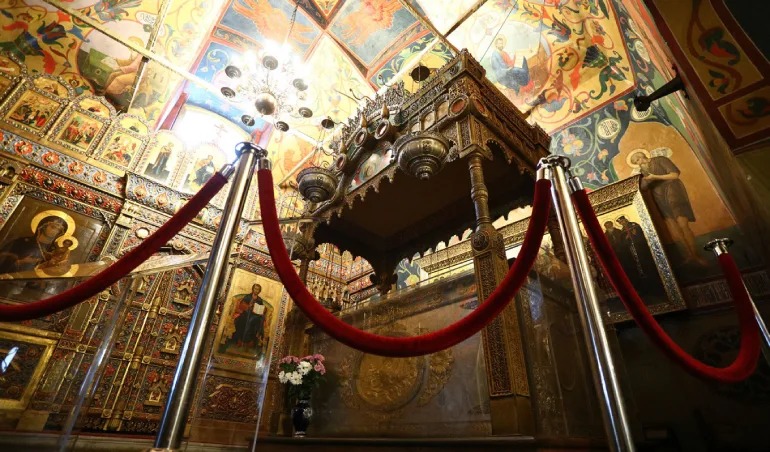
Image from: Themoscowtimes
Four large churches on four sides and four smaller churches in between surrounded the central church. Each church leads to two side churches, so all these buildings are connected by corridors. In 1672, another church built in memory of Saint John was added to this collection.
Saint John died in 1589. His church and tomb is the only church without a dome in this unique building. The eleventh and last dome of the cathedral is related to the bell tower that was built in the 1680s. In 1990, the bells built in the 17th to 19th centuries were returned to the tower, and after a long period of silence, the bells of St. Basil’s Church rang again over Red Square.
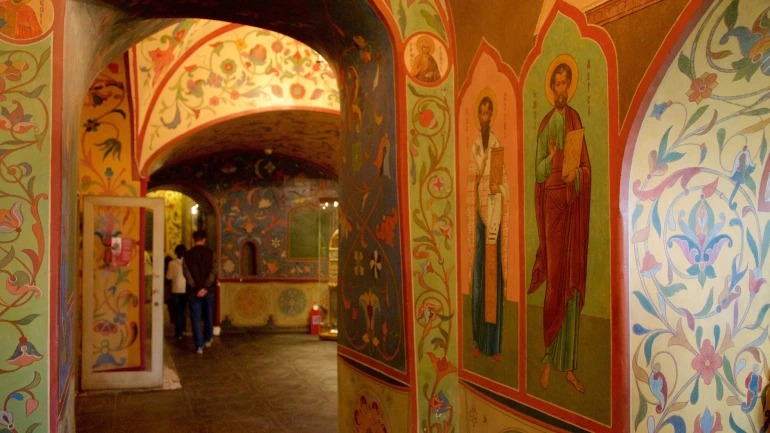
image from: Expedia
Plan of Saint Basil’s Church
As mentioned above, the plan of this church conveys the concept of the Trinity. At first glance, it seems that the building is very irregular; But the architects known in history as Barma and Postnik envisioned a layered, detailed and meaningful design for the church.
In the interior view, the plan is such that it has attractive twists and turns, and compact and low-height passages connect the church buildings. The design of the church is such that it does not have a high capacity for the presence of worshipers, and the building was purposely built in such a way that people outside the building and in the Red Square could do their worship and rituals. The gathering of people outside shows the power and popularity of the tsar.
The interior begins with the main entrance, which is located on the west side of the building. The western church, or actually the western gallery, is dedicated to the entry of Christ into Jerusalem. In this design, it was intentional. According to historians, this design is generally associated with Ivan’s triumphant entry into Kazan and his proud return to Moscow.
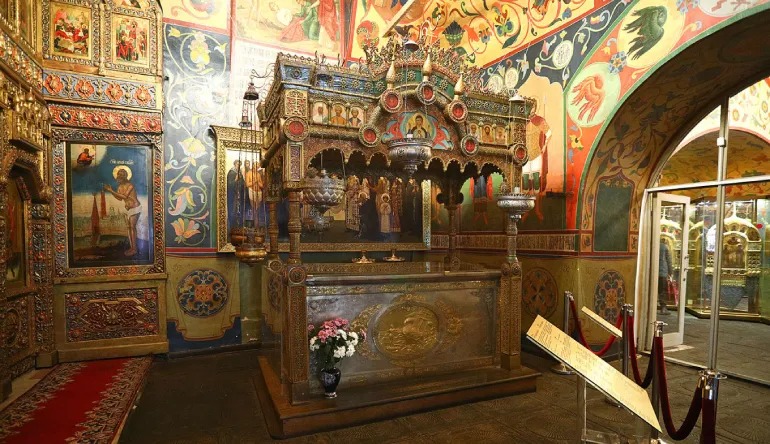
Image from: Themoscowtimes
Near the top of St. Basil’s Cathedral, restorers found inscriptions testifying to the exact date of the cathedral’s consecration: June 12, 1561. This date is celebrated as the “birthday” of the cathedral.
Most experts believe that this church could not have been built without the help of Italian builders. The brick that was used to build the cathedral was a new building material for Russia, and at least at that time and when they were first used, the Russian builders needed to learn how to use it from their Italian colleagues.
Different parts of Saint Basil’s Church
After carefully examining the historical monuments and evidence, it is good to take a look at the different parts of this church.
Holy God Baptist Church
This part is exactly the main part of the church. Where Saint Basil was buried and where the main temple is located. The walls are covered with authentic colors and numerous paintings.
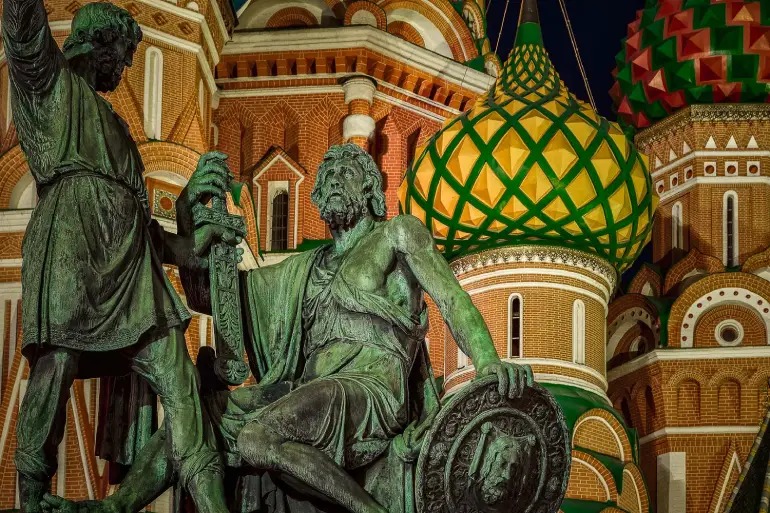
Image from: Squarespace
St. Basil’s Church Cemetery
In the lower part of the church, the church cemetery is located. A cemetery where famous and unknown people are buried.
Historical museum
At St. Basil’s Cathedral, as expected, there is a museum to inform visitors about the history of the building and the people of Russia. Documents, works and historical objects are stored in the museum.
Tomb of Saint Basil’s Church
The tomb of Saint Basil’s Church is located in the ninth chapel and on the eastern side of the church. This tomb is green and you can visit it every day.
Sights of St. Basil’s Church
As we have already mentioned, in St. Basil’s Church, it is full of historical works and documents. There are murals and paintings in this church that express the history, culture and beliefs of Russian people in the distant years. Of course, objects, tombs, altars and paintings are not the only sights of the church.
As it was said, this church has witnessed many historical periods and has gone through terrible events. It has been restored many times and the decorations on the walls have changed many times. Currently, there are remains and paintings from almost all restoration periods and you can visit them.
For example, paintings from the same period as Ivan IV, which were drawn in the form of bricks. (The reason for this imitation was that during the time of Tsar IV, bricks were an expensive and rare material.) and also oil paint decorations during the time of Catherine the Great.
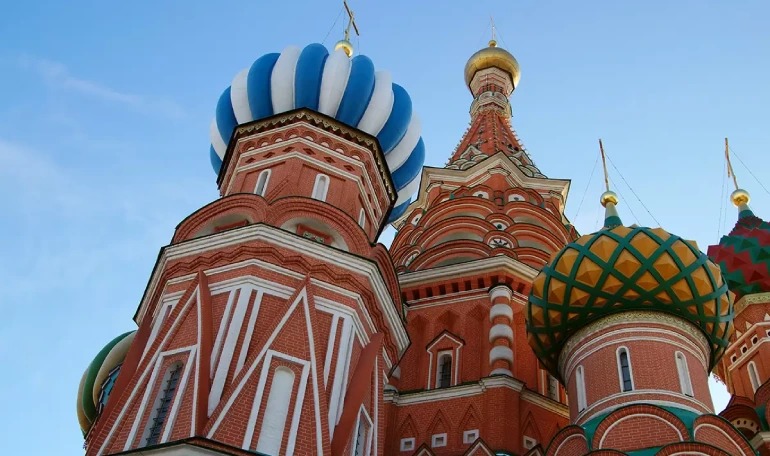
image from: Pelerinage
One of these signs is the wall, a part of which was not touched in the restoration, so that signs of the bombardment of 1917 during the Russian Revolution would remain. Among the relics kept in this church, there are shackles and chains attributed to St. John, shackles and chains that he wore under his loose and long clothes.
Among other works inside the church, we can mention an inscription that was found during one of the restorations. In this inscription, it was revealed that this church was dedicated by Ivan in 1561 in honor of the Holy Trinity.
Places of interest near Saint Basil’s Cathedral
There are various historical attractions around this historic church. We have listed some of them below.
Red Square
Red Square is one of the most important squares in Moscow and the whole of Russia. The international fame of this square attracts many tourists to Moscow every year. Red Square is the central point of the city of Moscow and many main streets end in this square.
You stand in the middle of the square, not only in the heart of Russian events, but also in the heart of Russian literature. The Victory Day parade and holding big concerts are among the attractions of this square. This square and the architecture of its buildings are protected as a world heritage site by UNESCO.

Image from: Rbth
Kremlin wall
The Kremlin wall is a very important monument. The grave of great and influential people such as Yuri Gagarin (the first man who went into space). In 1917, a tomb was built under the Kremlin wall for 240 fighters of the October Revolution of the same year. The busts in this tomb, regardless of whether that person is good or bad, are people who shaped the history of the Soviet Union, and the names of these people have been recorded in history for good or bad.
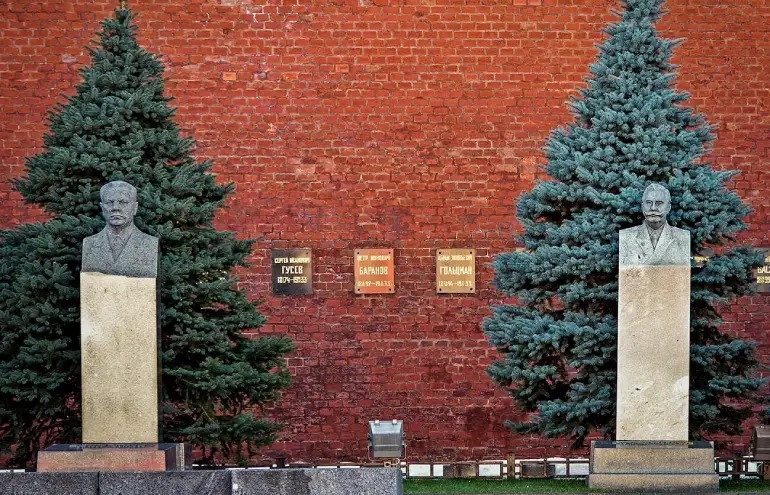
Image from: Rbth
Zardieh Park
Zardiye Park is the first public park in Moscow. This park has its own design and architecture, because Russia decided to hold a design competition at the international level to preserve this historical park. A place where humans and plants live peacefully together. For this purpose, this park was designed and built in an environmentally friendly manner with minimal damage.
Kremlin Palace
The Kremlin Palace or the heart of Moscow, which was the residence of the tsars in the past, is today known as one of the symbols of the country’s power. This building is located in the east of the Red Square and was renovated in the 15th century by Ivan III.
The Kremlin Palace is the oldest and largest palace in Moscow and is still used for political meetings. This fascinating and magnificent building has been so influential in the history of Russia that just by studying the documents related to it and the history of this building over the years, you will review an important part of the history of Russia.
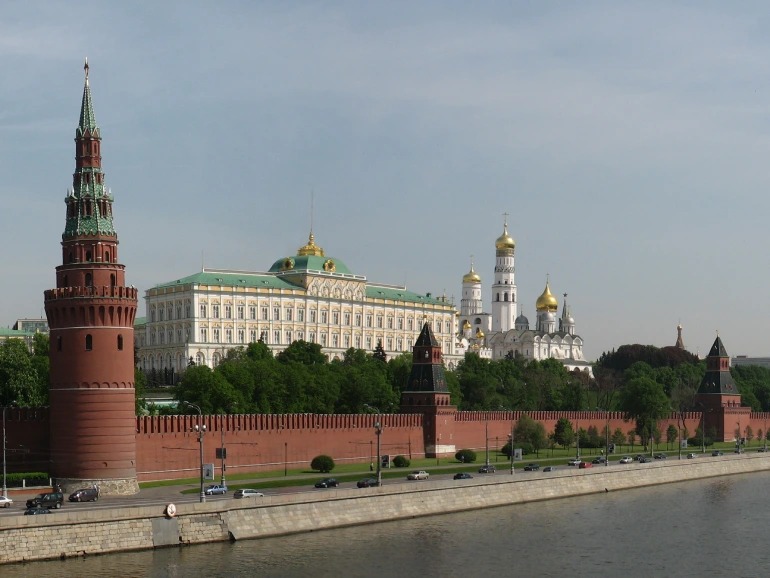
Image from: Wikimedia
Lenin’s tomb
Visiting the mausoleum of Lenin, the first leader of the Soviet Union, can be really exciting. Lenin had willed to be buried next to his mother, but contrary to his wish, his body was mummified and buried in Red Square, near the Kremlin Palace.
A mummified body in a glass coffin that attracts millions of tourists to Moscow every year. It is good to know that visiting Lenin’s tomb is completely free, but it has its own strict rules.
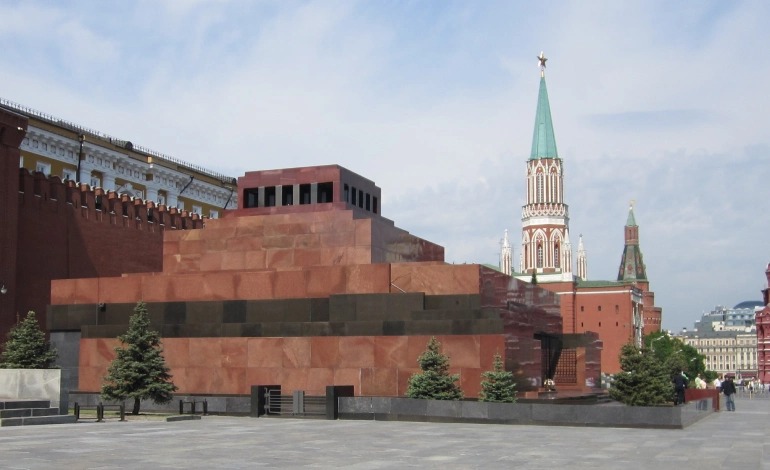
Image from: Wikimedia
Corgi Park
Corgi Park dates back to 1928. This park was once a resort of Russian aristocracy and now it has become one of the most famous parks in Russia. Beautiful mansions inspired by Italian architecture can be seen everywhere in this park.
Stay near Saint Basil’s Cathedral
There is no problem to stay in Moscow city. All kinds of hotels, hostels and inns are active in Moscow. Even some Russian citizens provide a part of their house to tourists during the busy season; But the noteworthy point is the cost of accommodation.
Red Square, which is exactly where St. Basil’s Cathedral and most of Moscow’s sights are located around it, is an expensive place to stay. Keep in mind that Russia has one of the best public transportation systems and you can reach the whole city by metro. However, we will list several accommodations near St. Basil’s Cathedral in Moscow for you:
- Sunflower Park
- Petroff Palace Boutique
- Ibis Moscow Dynamo Radisson Slavyanskaya & Business Center
- Mayak hostel
- Moscow Sheremetyevo Airport
- The Ritz-Carlton
- Hotel Savoy Moscow
- The St. Regis Moscow Nikolskaya
- The Ritz-Carlton
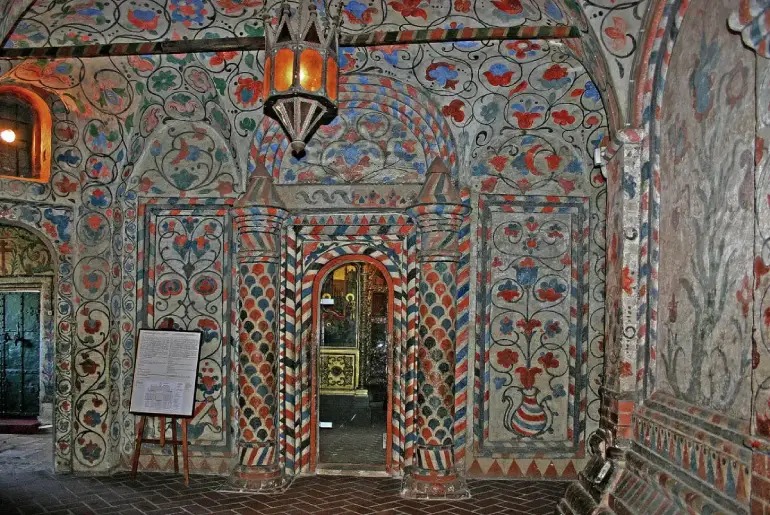
Image from: Wondermondo
Recommendations for visiting Saint Basil’s Cathedral
Saint Basil’s Cathedral of Russia is one of the most dreamy places that anyone will visit in their lifetime. As soon as you enter the premises, you are unconsciously immersed in the splendor and history of this building. The people and politicians who came and went, improved this building or started to destroy it, all these people have been left in the memories, but this is the church that remains.
Do not forget the camera. Photography is allowed from all parts of the church, without using flash.
Be aware that it is forbidden to touch all objects and paintings in the church. If it is difficult for you to climb stairs or your child is in a stroller, postpone the visit to the church for another time. It is forbidden to bring a bag into the church, and if you bring it with you, you must put it in the safe deposit box.

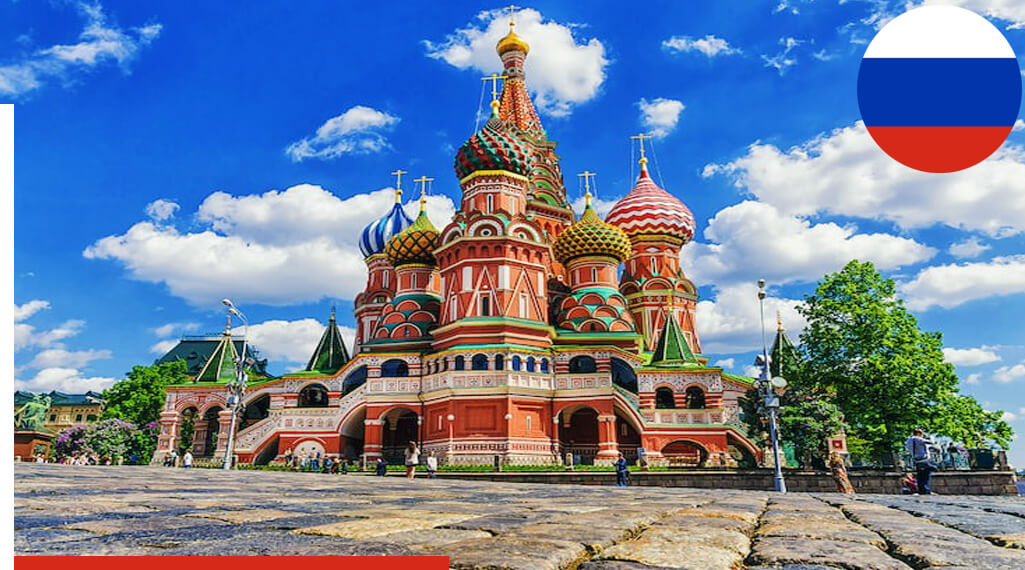
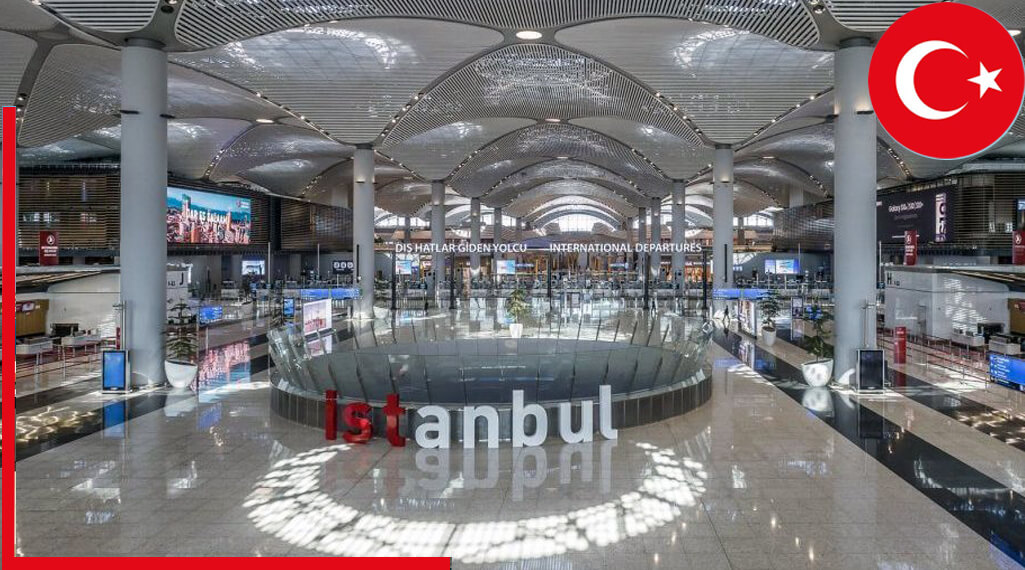
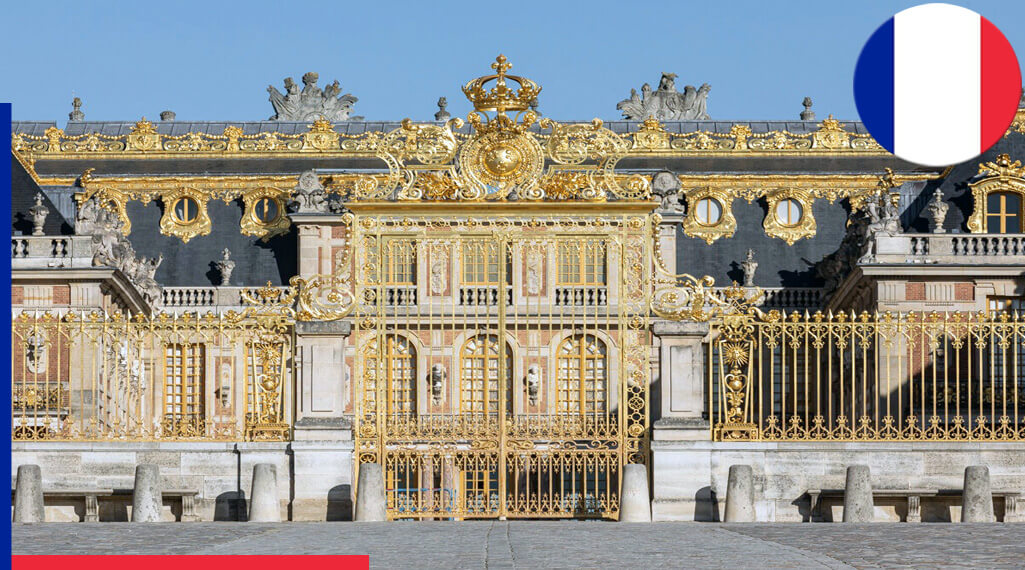
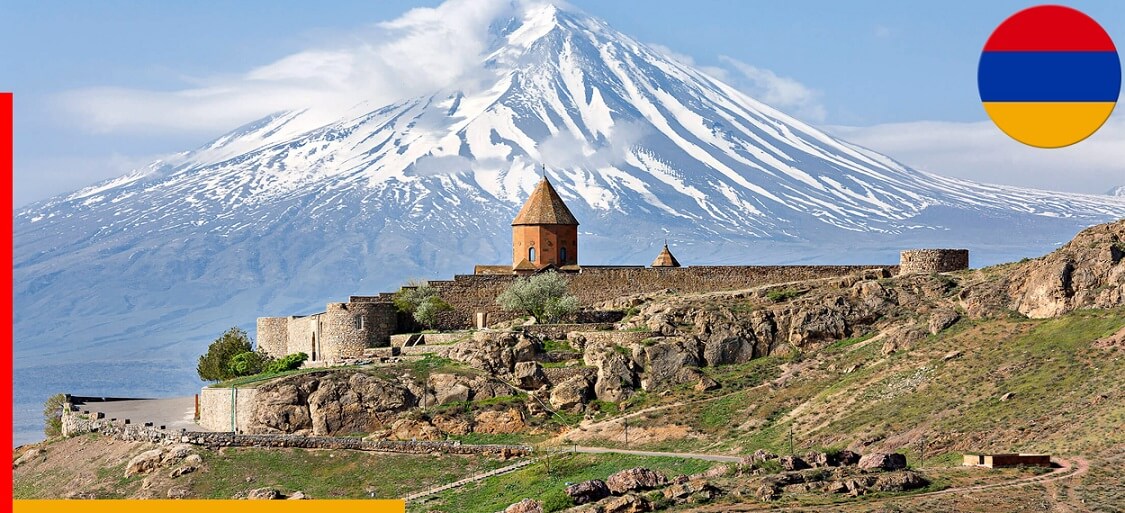
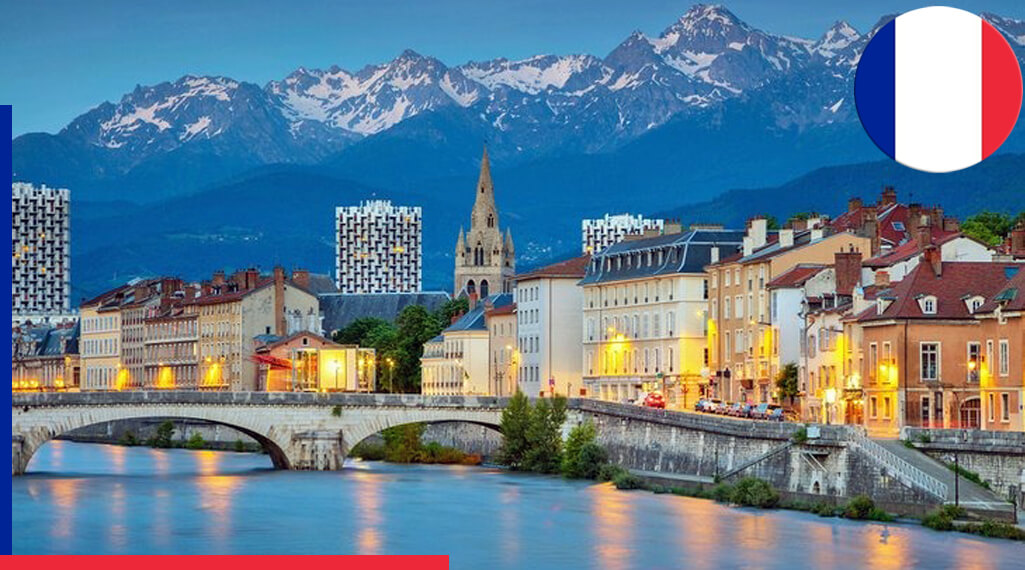
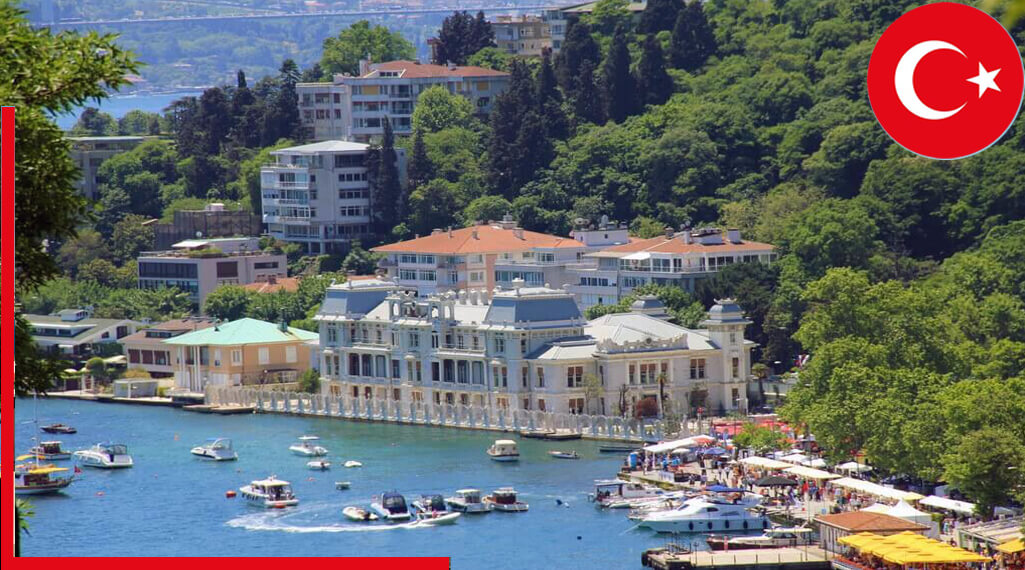
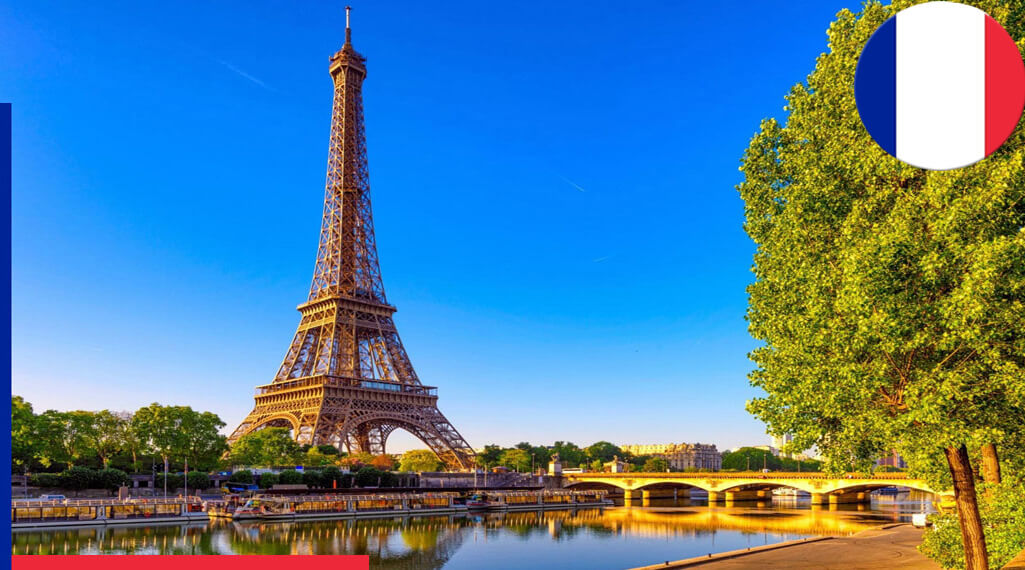
Recent Comments